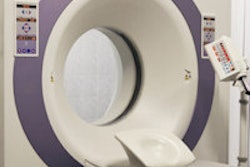Monday, December 1 | 3:40 p.m.-3:50 p.m. | SSE22-05 | Room S403B
A group from the U.S. National Institutes of Health (NIH) will discuss in this Monday talk how spinal compression fractures can be automatically detected and analyzed on CT images.Osteoporotic compression fractures of the thoracic and lumbar spine are common and underdiagnosed; the estimated incidence of unreported fractures on body imaging CT studies ranges from 73% to 91%, according to lead author Dr. Joseph Burns, PhD, a former visiting fellow at NIH and currently an associate professor at the University of California, Irvine.
"Diagnosis and assessment are important to guide patient management, as secondary complications can occur in the collapsed vertebra, and the collapse of one vertebra portends a 12-fold increased risk of collapse of a second vertebral body," Burns told AuntMinnie.com.
Quantitative imaging has the potential to diagnose compression fractures and to guide patient management by precisely classifying vertebral body compression deformities based on morphology and material characteristics, he said.
The researchers developed a system that could help decrease the incidence of unreported osteoporotic spinal compression fractures, provide reader-independent automated fracture deformity classification, and yield significant additional anatomic information over traditional qualitative visual assessment, Burns said. It also has potential for use as a research tool.
"The system can robustly detect and localize compression fractures to the correct vertebrae, as well as generate quantitative statistics regarding compression morphology," he said. "These data will allow assignment within a classification scheme such as Genant's semiquantitative criteria with lateralization."
The project represents the first step in the planned development of a system that will also incorporate the clinically relevant parameter of canal stenosis as well as vertebral material characteristics in support of classification and treatment planning, Burns noted.
Get more details during this presentation, which will be given by Dr. Ronald Summers, PhD, from the NIH.




















